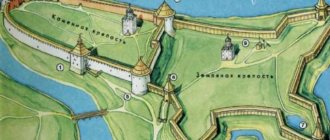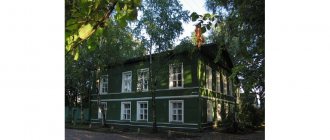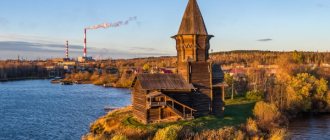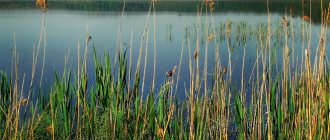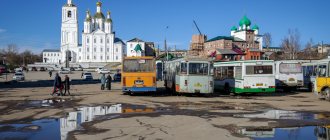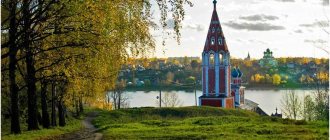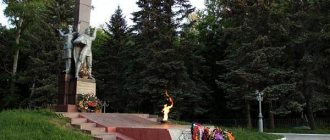About 120 km separate St. Petersburg from Staraya Ladoga. A small village with a population of almost 2 thousand people is located in the Leningrad region in the Volkhov district. The historical, cultural and sacred sights of Staraya Ladoga with photos and descriptions will tell you many interesting facts about the village, which until 1703 had the status of a city.
History of Staraya Ladoga
The small ancient village is rich in attractions. Archaeological excavations, actively carried out in the 2000-2010s. on the territory of Staraya Ladoga, indicate that the first settlements appeared here in the middle of the 8th century. The year 753 is considered the year of the founding of Ladoga - that’s what the city was called until 1703.
The Varangians, immigrants from Northern Europe, began to develop the lower reaches of the Volkhov River and erected the first buildings on the territory of modern Staraya Ladoga. The Scandinavians called their settlement Aldeigya, later Aldeiguborg. During the period 760–770. Slavic tribes displaced the Varangians. Residents of Ladoga were engaged in agriculture, crafts and trade.
Important! In the 780s, Ladoga became the birthplace of the first Russian money.
Local residents bought furs from the Scandinavian peoples. Goods were paid for with eyed beads. Residents of the city sold furs to Middle Eastern merchants for silver coins - dirhams. Modern historians call them “medieval dollars,” emphasizing the prevalence and reliability of money.
In 800–830 economic ties between Ladoga, which played the role of the capital of Ladoga Rus, an early state formation, and the countries of the Middle East and Northern Europe, actively developed. Two important trade routes from the Baltic Sea passed through the city: along the Volga and Dnieper. Several important events stand out in the history of early medieval Ladoga:
- 840 - enemy invasion of the Scandinavians;
- 860 – destructive internecine wars;
- 862–864 - the reign of Rurik, a Varangian considered the founder of the Rurik dynasty;
- 870 – completion of the construction of a wooden fortress;
- 870–880 – Ladoga becomes a large ancient Russian city, occupying an area of 12 hectares;
- 882 – beginning of construction of the first stone fortress;
- 997 - Ladoga was captured by Eirik, the Norwegian jarl (ruler);
- 1019 - the city went to Ingerda, the Swedish princess and wife of Yaroslav the Wise, as a dowry.
Some historians call Ladoga the first Russian capital. This is how the short period of Rurik’s reign influenced the status of the city. In 1116, a new citadel was founded on the site of the stone fortress destroyed by Eirik’s soldiers. Subsequently, the fate of the city developed differently:
- XII and XIV-XV centuries - construction of monasteries, cathedrals and churches;
- end of the 15th century - Ladoga became part of the Moscow kingdom;
- 1136–1478 – the city and surrounding area became part of the Novgorod Republic;
- 1313 and 1338, as well as the period 1613–1617. – Russian-Swedish wars;
- 1570–1572 – epidemics, oprichnina and famine;
- 1580–1583 – Johan III, the Swedish king, tried to capture the city four times;
- 1617 - signing of a peace treaty with Sweden, according to which Ladoga was returned to Russia;
- 1704 – Peter the Great abolished the status of the city; The village became officially known as Staraya Ladoga.
Important! In 1703, Peter I founded Novaya Ladoga at the mouth of the Volkhov.
The year 1703 became fateful in the history of Russia - Peter I founded the new capital - St. Petersburg. The borders of the state moved far to the west from the place where Ladoga was located, having lost its important economic, military and political significance. In the 18th century, the village was a quiet place around which the estates of landowners were built.
During this period, Ladoga played the role of an arts center of the Russian North. A. R. Tomilov, a landowner and collector of paintings, made a great contribution to this. Among the guests of his Uspenskoye estate were such famous Russian artists as O. Kiprensky, A. Orlovsky, A. Venetsianov. Painters captured the sights of the city on their canvases.
In 1851, after the completion of the railway connecting the two capitals, St. Petersburg and Moscow, Ladoga found itself far away from the main trade routes. This caused great harm to the rural economy. During the Soviet period, the status of Staraya Ladoga changed several times. Since 1927, the village has been part of the Volkhov district. In 1941-1943. rural buildings, including famous landmarks, were bombed by the German invaders. In 2003, the 1250th anniversary of the ancient city was widely celebrated. President V. Putin took part in the ceremonial events.
Nikolo-Medvedsky Monastery
In Novaya Ladoga, there are also many attractions that are worth visiting. One of them is the Nikolo-Medvedsky Monastery. It was founded in the 15th century and in 1583 was dilapidated at the hands of German knights. At the height of the Northern War in 1702, by order of Peter 1, the monastery was surrounded by an earthen rampart and ditches for protection purposes. Currently, only part of the remains have been preserved.
Architecture of Staraya Ladoga
Thanks to the preserved sights of Staraya Ladoga, the history of the ancient city is clearly presented to tourists interested in the distant past of the village. The first buildings, the remains of which were discovered during archaeological work, date back to the 750s. They are made in the ancient style of Scandinavian pillar structures. They were replaced by log houses built by the Slavs, who ousted the Varangians from Ladoga.
At the beginning of the 10th century, frame-and-post merchant houses became the main attractions of the city. In the 12th century, the appearance of Staraya Ladoga changed thanks to the construction of stone buildings. The most famous buildings: the Church of St. George, the Assumption Church and St. Nicholas Cathedral.
The 14th–15th centuries were marked by the scale of construction of monasteries in Staraya Ladoga. All of them were destroyed during the Russian-Swedish wars and restored in different historical periods. Among the most famous sacred sights of Staraya Ladoga, three monasteries stand out: Nikolsky, Vasilevsky and Simeonovsky monasteries.
Tanechkina Cave
In the past, Tanechkina Cave was a place where white quartz was mined. It stretches seven kilometers in length. The cave has many passages and labyrinths, and in its central gallery there is a shallow lake.
Hundreds of bats live inside. This is the largest, but also the most dangerous cave in Staraya Ladoga. Landslides and flooding often occur here, although this rarely stops speleologists.
What to see in Staraya Ladoga
The ancient village stretched along the Volkhov bank for 3 km. The width of the village is 1.3 km. The main historical and sacred sights of the city of Staraya Ladoga are located in a small space. The doors of the museum-reserve, five churches, two monasteries and one graveyard are open to guests of the village.
Staraya Ladoga Historical, Architectural and Archaeological Museum-Reserve
Any excursion to the sights of Staraya Ladoga includes a visit to the local museum-reserve. There are more than 150 sacred and historical and cultural objects located here. The museum-reserve is an attraction that not a single guest of the village passes by. Visitors are most interested in the Staraya Ladoga Fortress, located where the Ladozhka, a small river, flows into the deep Volkhov.
The building erected in the 15th century has survived to this day. The thickness of the stone fortress walls is 7 m, height – 7-12 m. The exhibition, which includes a rich collection of artifacts found as a result of many years of excavations on the territory of Staraya Ladoga, is located on the second floor of the Gate Tower. The fortress is considered the main attraction of the village.
Attention! The exhibitions of the museum-reserve are open to the public every day, excluding January 1: in summer - from 9:00 to 18:00; in other months - from 9:00 to 17:00.
St. George's Church
Among the sacred sights of Staraya Ladoga, the single-domed four-pillar temple, erected in 1180-1200, stands out. Accurate information about the construction of St. George's Church has not been preserved. The temple was erected in honor of the victory over the Swedes in the Battle of Voronezhka, a river flowing 35 km from Staraya Ladoga. Over the centuries-old history of its existence, the church was rebuilt five times. The domes and walls were skillfully painted by Greek and Novgorod masters. Of the original frescoes, 1/5 has been preserved. St. George's Church is a unique sacred landmark of the pre-Mongol period.
Church of the Nativity of John the Baptist
In 1695, a stone five-domed Baptist Church was built on Malysheva Mountain, located in the northeast of Staraya Ladoga. The sacred building was located on the territory of the Ivanovo Monastery, of which not even ruins remain. After closing in 1920, the Church of the Nativity of John the Baptist gradually collapsed. Restoration work was completed in 1991. Now the Church of the Baptist is a functioning temple that adorns Staraya Ladoga. It is assigned to the Nikolsky Monastery - one of the best preserved ancient landmarks of the village.
Staraya Ladoga Nikolsky Monastery
In 1240, after the victorious Battle of Izhora with the Swedes, Alexander Nevsky founded a monastery in Ladoga. The monastery was built around St. Nicholas Cathedral, which existed since the 12th century. The monastery houses the relics of St. Nicholas the Wonderworker, brought to Ladoga from Bari, an Italian city. During the Soviet period, a fishing cooperative, a hostel and a vocational school were located here. The revival of the St. Nicholas Monastery began in 2002, when the monastery was returned to the church and re-opened.
Staroladoga Assumption Monastery
Among the sacred sights of Staraya Ladoga, the monastery, founded in 1156, stands out for its architectural style. Most of the monastery buildings date back to the 19th century. The oldest building is the Assumption Cathedral, erected in the 12th century. The sacred building is the second landmark of the pre-Mongol era in the village. The buildings of the Church of the Exaltation of the Cross, the hospital building and the Gate Chapel were built in the Russian Empire style. Relatives of the Decembrists were imprisoned in the Staroladoga Assumption Monastery. Since 2005, restoration work has been carried out at the monastery.
Church of Demetrius of Thessalonica
Among the stone structures of the Staraya Ladoga fortress, the wooden building of the Church of Dmitry of Thessalonica stands out. The landmark, similar to a large village hut, is decorated with an onion dome and a cross. The first mention of the temple dates back to 1646. The church, built for winter services, was rebuilt several times. The unique landmark was almost completely destroyed by fire in 1782. The church was restored in one year. Now in the cozy hall of the temple that adorns Staraya Ladoga, there is an exhibition of ancient frescoes. Worship services resumed in 2014.
Estate "Uspenskoe"
Next to the Assumption Monastery there is a two-story red brick building, well known to tourists. This is all that remains of the Uspenskoye estate, which belonged to R. N. Tomilov at the end of the 18th century and was later rebuilt by his son. Paintings by Russian artists, drawings by Rembrandt and other works of art donated to the St. Petersburg Russian Museum were kept here.
Attention! The estate burned down in 1928. The building that now appears before the guests of Staraya Ladoga is a dilapidated service house.
House of merchant P. V. Kalyazin
In the surviving photos of the city of Staraya Ladoga you can see what this place looked like in the century before last. One of the most remarkable buildings of that time is the house of the merchant Pyotr Kalyazin. Now the halls of the Archaeological Museum are located here. The attraction attracts tourists interested in the distant past of the village. Household items, weapons and costumes help visitors get acquainted with the culture of the peoples who lived in the city in different historical periods.
Oleg's grave
Archaeologists have discovered several burial mounds in Staraya Ladoga and the surrounding area of the village. One of the most famous is “Oleg’s Grave”. In the burial mound of Prophetic Oleg, the Varangian prince, charcoal, a spear tip and a piece of iron were discovered. The historically important landmark has a height of 10 m. According to legend, Oleg died from the poison of a snake that was hidden in the skull of a dead horse. According to some historians, the grave of the great Novgorod prince is located in Kyiv. Disputes about this fact or myth have not stopped to this day.
Monument to princes Rurik and Oleg
On September 12, 2015, a new monument appeared on Varyazhskaya Street, which became a landmark popular among tourists. On that day, a fateful event took place in the life of provincial Staraya Ladoga - the opening of a monument to Rurik and Oleg the Prophet, two princes who founded the Russian state. The author of the project is O. Shorov.
Lyubsha fortress
2 km from the village there are the remains of an ancient fortification. Archaeologists call the stone-earth Lyubsha fortress the most ancient citadel of the Russian state. The structure was erected by the Slavs in the 8th century. As a result of archaeological excavations, it was possible to find glass items, stove structures and jewelry made by ancient craftsmen. The fortress, located near the Lyubsha River, was a three-meter clay rampart lined with large stones. Together with the wooden frame, the height of the walls was 7 m.
Where did the name come from
No one can say for sure what the name of the settlement was. After all, other geographical objects are called exactly the same: river, lake. They got their name before the settlement appeared.
Staraya Ladoga is the oldest trade and craft settlement in the North-West. People lived here during the Neolithic period, but the official date given by archaeologists is 753
There are many variations of the name. In short, some researchers believe that the word is of Scandinavian origin, because the Scandinavians were the first to explore this place, almost two decades before the Slavs. If we judge based on this fact, then the word is translated as a low area near a river.
Russians began to settle here in the middle of the 13th century. The settlement played an important role: the main hub connecting trade sea routes. Moreover, Staraya Ladoga was at one time the first capital city of Rus'. Rurik reigned in it. That is why a trident in the form of a diving golden falcon was placed on the flag of the Staraya Ladoga rural settlement - the sign of the Rurikovichs. During the excavations, a scroll made of birch bark was found, on which a boat was depicted. Who knows, maybe this sea transport is the symbol that gave the name to the settlement.
If suddenly you didn’t already know, then we recommend reading the article about how many towers the Moscow Kremlin has and what they are called.
Natural attractions of Staraya Ladoga and its surroundings
The landscapes of the village and surrounding areas do not amaze with bright colors. But the modest natural beauty of the Leningrad region is no less attractive than the subtropics or savannahs. Tourists prefer to explore the natural attractions of Staraya Ladoga by car. Next to the village there is the Gorchakovshchinsky waterfall. Its height is 4.5 m. The waterfall is especially beautiful in spring, when it is widest, and in winter, when the water jets freeze and the natural attraction resembles the throne of the fairy-tale Snow Queen.
Not far from the village lie the “domains” of the Staraya Ladoga Nature Reserve. Its total area is 2.2 square meters. km. The reserve is famous for artificial caves formed in the century before last, when peasants mined quartz sand to make glass. Nature transformed the underground passages, filling them with streams and drips.
Of greatest interest to tourists coming to Staraya Ladoga are three caves: Staroladoga, Malyshka and Tanechkina. The length of the last of them is 7.5 km. Tanechkina Cave is known as a wintering place for bats.
Gorchakovshchinsky waterfall
Address: Leningrad region, Gorchakovshchina village Cost: free How to get there: by car - along the E105 highway St. Petersburg - Petrozavodsk; by train - from Moskovsky or Ladozhsky railway stations to the Volkhovstroy station, then by bus No. 24, No. 28, No. 32, No. 53 to the Gorchakovshchina stop.
Gorchakovshchinsky waterfall is interesting because it is the highest waterfall in the Leningrad region. Its height reaches four meters. The waterfall is located on a small river flowing into the Volkhov. Therefore, if you have a couple of free hours, you can safely go to the village of Gorchakovshchina to enjoy the picturesque landscape and feel the peaceful atmosphere.
If you have not yet chosen where you will live and want to save money when booking, we recommend using the RoomGuru service. Firstly, it contains hotels, apartments and guest houses from many different booking systems, so you won’t miss out on a worthwhile option. Secondly, you can immediately compare prices for one place in different services and book where it is cheaper (this is not always Booking!).
Photos of Staraya Ladoga
Reservoirs
The Leningrad region is rich in various reservoirs. The museum-reserve also has its own remarkable places.
Volkhov River
The village of Staraya Ladoga is located on the banks of the Volkhov River. The “culprit” of this name was one of the Scythian princes - Sloven. At first, of course, the name Magi (magician) was given to the tribes living on the shore.
View of Staraya Ladoga from the Volkhov River during sunset
At all times, the river was rich in fish. Today, tourists can not only go fishing, but also go boating along the difficult Volkhov riverbed.
Take note: tourists who are not afraid of difficulties can travel by boat along the route along which they sailed along the Volkhov River “from the Varangians to the Greeks.”
Staraya Ladoga Canal
The Staraya Ladoga Canal, 117 kilometers long, connects the Volkhov and Neva, while bypassing Lake Ladoga. The canal begins on the Volkhov River four kilometers from the mouth and leads to the Neva.
Staraya Ladoga Canal in the Leningrad Region. A cultural heritage site included in the UNESCO list - however, its condition does not correspond to its high status. Experts say that the monument is in danger of complete destruction. It has been impossible to clean or repair the canal for many years
Peter the Great himself began and supervised the construction of the canal, who took out three wheelbarrows of earth with his own hands. At the same time, the tsar gave freedom to every peasant who came to work, and this was in 1719. Construction was very difficult and proceeded slowly, ending only in 1731 during the reign of Anna Ioannovna, who broke through the earthen bridge with a shovel. These tools - a wheelbarrow and a shovel - were stored for a long time in a chapel built near the canal.
Ladoga lake
Lake Ladoga was called differently: “Little Sea”, “Lake of Life”, Ladoga. In ancient times, the lake bore the name Nevo, then it began to be called Ladoga after the name of the fortress.
Lake Ladoga is the largest lake in Europe. Our ancestors considered Ladoga a sea, and they called the Varangians precisely because of this sea, and not because of the Baltic Sea
The shores and waters of the lake have gone through many events. Archaeologists have been studying the bottom of the lake for decades and have found many historical artifacts.
This is the largest lake in Europe of glacial origin. To the north there are rocks cut by skerries. There are no cliffs on the other shores of the lake. Part of the coast is sandy, part is difficult to access due to swamps. It did not always flow into the Neva; a new channel was formed after the Karelian Isthmus was raised.
It is important to know: an important artery passed through Lake Ladoga during the Second World War - the road of life, which saved many Leningraders from hunger and death.
Reconstructions of ancient battles
An interesting sight opens to tourists every year. You can watch theatrical fights, the participants of which are actors dressed in the armor of medieval warriors.
Popular:
- Festival "Sovereign Shield". Each time a new era is played out in front of the audience. In addition to the battle, you can get acquainted with the peculiarities of everyday life, cultural pastime, and find out how our ancestors dressed and ate. Skilled craftsmen will make products in front of the audience. Nearby, the old Russian fair is noisy and humming, where any guest can buy souvenirs.
The historical and cultural festival “Old Ladoga - the first capital of Rus'” on the territory of the museum-reserve “Staraya Ladoga” is dedicated to the period of the 8th-11th centuries and the creation of the Old Russian state on the original site of events that took place during the formation of Russian statehood
- Historical and cultural festival “Old Ladoga - the first capital of Rus'”. It pursues a different goal: to tell about the culture of our ancestors, about the struggle for our free existence. A real holiday with performances, music, dancing. In the shopping areas you can find various things that are usually taken away as a souvenir of your stay at the museum-reserve.
